In recent years, thanks in large part to social media, the peony has become the signature bloom of Paris in the late springtime. Countless stems of the flower, running a stunning colour spectrum from cream to musk to garnet, are stacked high in Paris’s food markets, their closed petals promising a glorious unfurling to come …
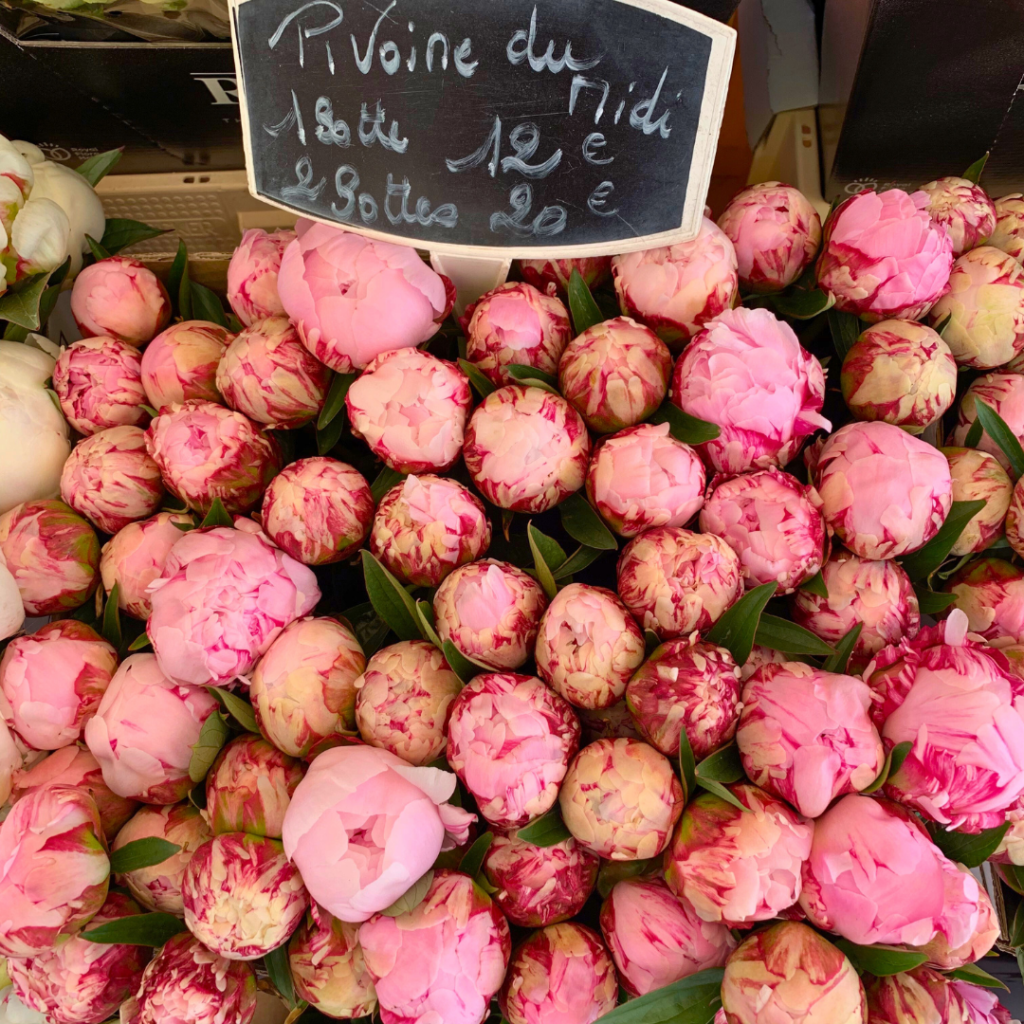
… and, as summer heats up, we see pink peonies spilling out from buckets out front of the city’s florists, their frilly petals echoing the ruffles of Parisiennes’ new-season dresses.

But the peony, for all this aesthetic synergy, is a relative newcomer to Paris, an honorary Parisienne of the botanical world; just like the Japanese cherry blossom, the flower that now seems so symbolic of early springtime in Paris. The peony also hails from Asia, from Ancient China, where it was beloved for medicinal purposes before being cultivated for its ornamental beauty.
Europe went mad for peonies in the nineteenth century. Some say that the fashion was kick-started by Empress Joséphine, that lover of exotic flora and fauna, who had peonies planted at her Château de Malmaison garden in the early 1800s.
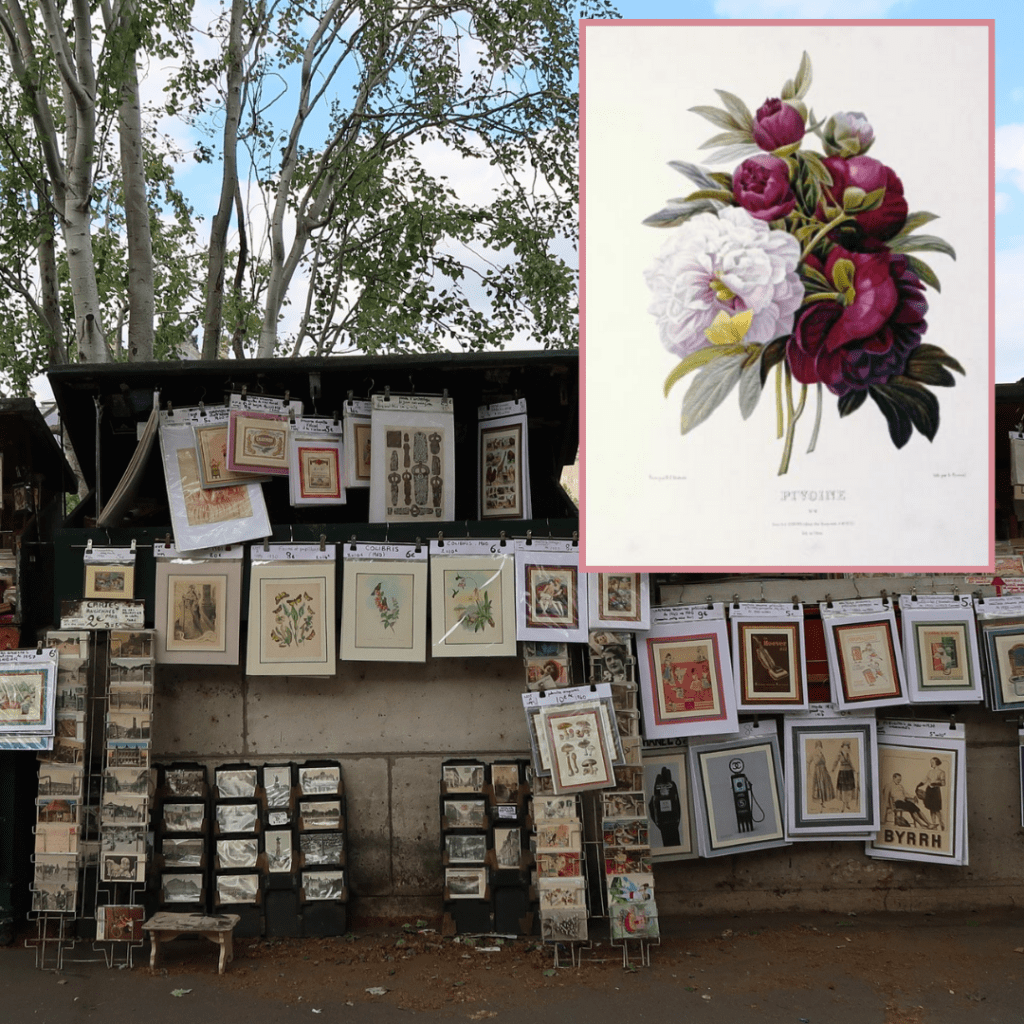
In any case, the empress was the patron of renowned artist and botanist, Pierre-Joseph Redouté, whose exquisite watercolour depictions of peonies make for chic Parisian souvenirs.
As the nineteenth century bloomed, the Romantics fell for peonies (George Sand wrote about them, Eugène Delacroix used them as subjects), before the Impressionists made them their own. Claude Monet, Berthe Morisot, and Pierre-Auguste Renoir painted them; Edouard Manet even had a peony garden out at Gennevilliers, just west of the city, and his gorgeous Vase de Pivoines sur Piédouche from 1864 can be admired in the Musée d’Orsay.
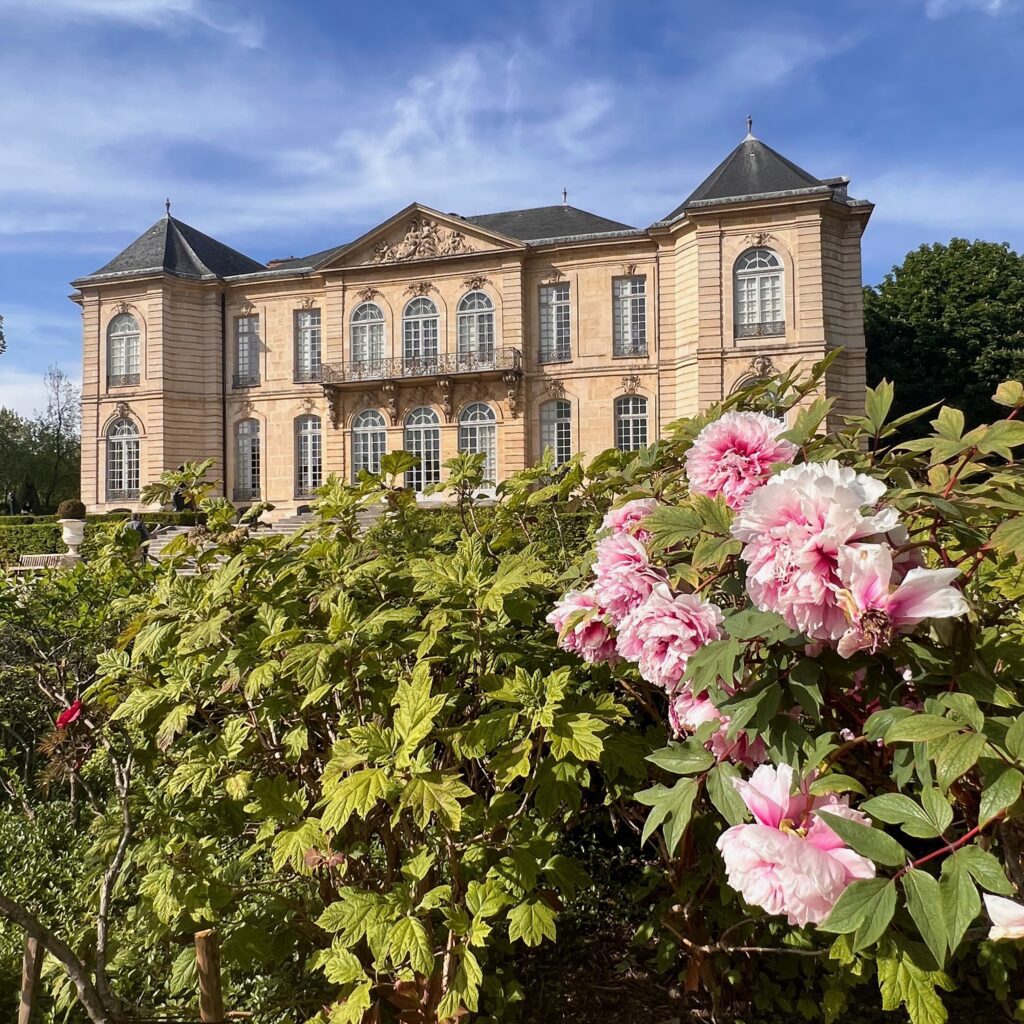
To see how peonies might have appeared to nineteenth-century Parisians, take a walk in the sculpture garden of the Musée Rodin (above). In contrast to the impeccable interior beauty of the museum’s main house, the garden seems, in part, a little wild and rambling, taking you right back in time to when the property was a romantically dilapidated artists’ residence. Before Auguste Rodin rented a studio here, famous dwellers included dancer Isadora Duncan, painter Henri Matisse, and poet Rainer Maria Rilke. Poet-playwright-filmmaker Jean Cocteau also lived here for a while, when the garden was a wistfully overgrown tangle that reminded him of a Charles Perrault fairy-tale, and if you linger by the abundant bursts of peonies, lilacs and hydrangeas, it’s not a stretch to imagine the bohemian glamour of the museum’s former life.

At the turn of the twentieth century, the artists of Art Nouveau also admired peonies for being both feminine and exotic. Alphonse Mucha, one of the movement’s leading names, was a fan. He most famously painted Sarah Bernhardt, and she in turn inspired horticulturist Victor Lemoine, who, in 1906, bred a new peony — more frilled, more flamboyant than ever — and named it after the great actress. To this day, the ‘Sarah Bernhardt’ peony (above) is arguably the most adored — the most sold, the most photographed — in Paris.

Peony season generally begins in early May and lasts until late June. During this time, you can find peonies at most of the city’s food markets, such as the Marché Président Wilson (Avenue du Président Wilson, Wednesday 7am-1:30pm, Saturday 7am-2:30pm) as well as florists all over town.
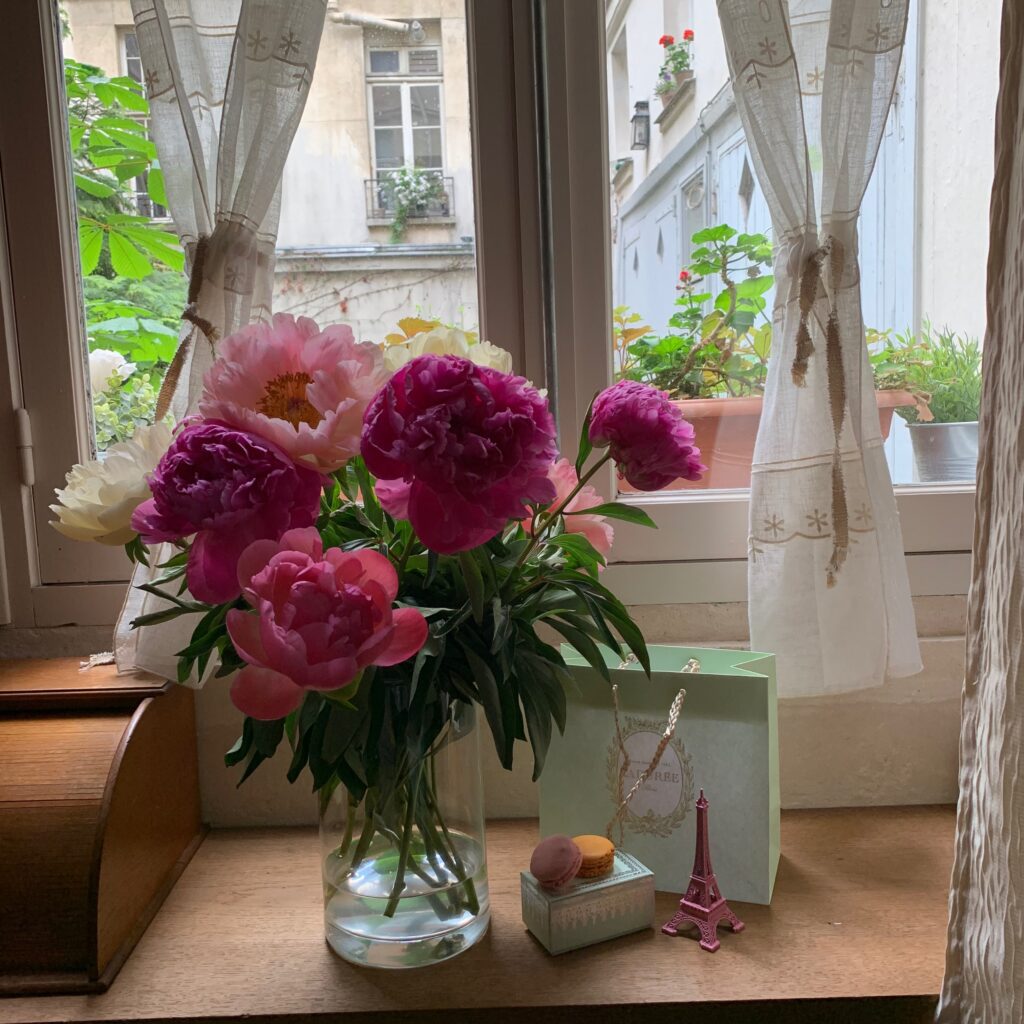
And if you’re in Paris beyond peony season, or want a souvenir that helps that floral memory last longer? Fragrance brand Durance has a lovely peony candle; there are several boutiques in Paris, including one at 15 Rue des Rosiers, 75004. And Dior currently sells its Mitzah scarf in a pretty peony print.
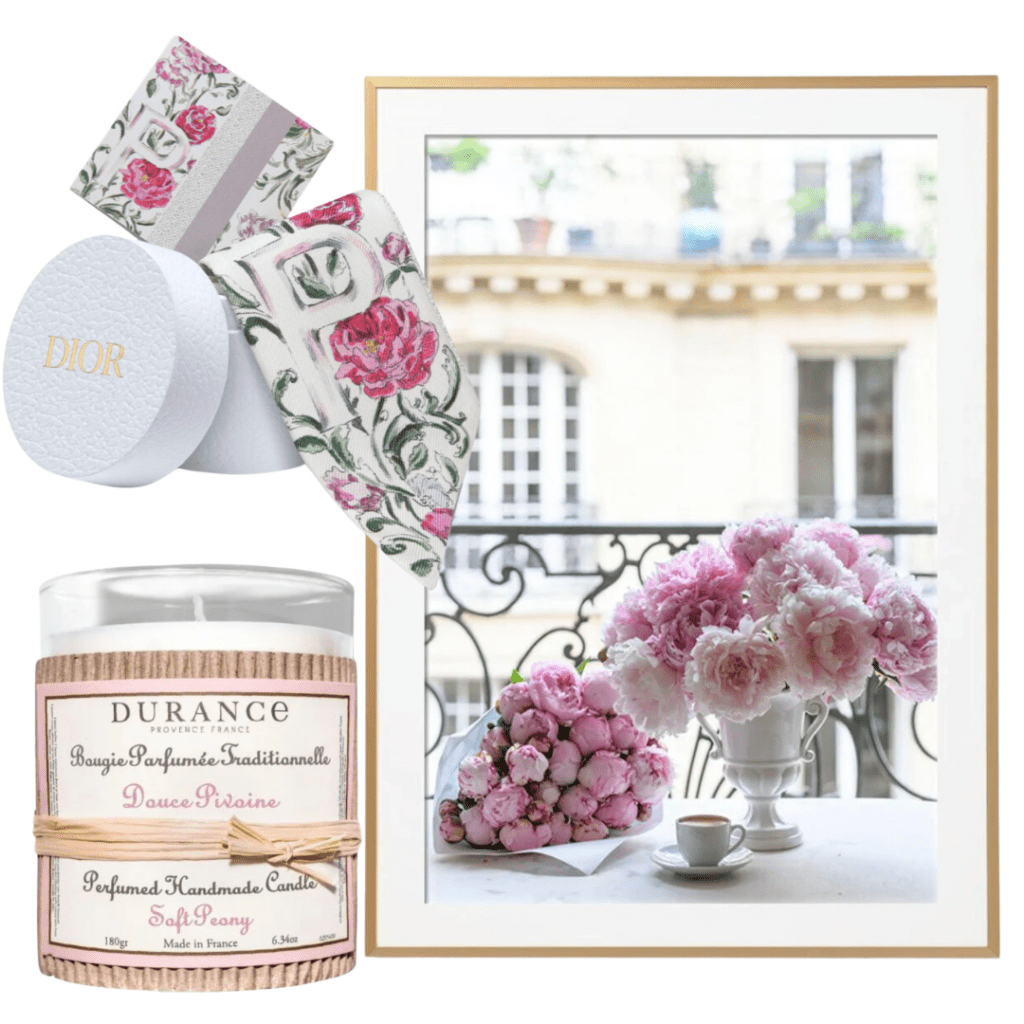
Perhaps, however, the ultimate way to capture the flower in all its Parisian glory is with a photograph from one of the names who have made the peony such an iconic Parisian bloom for these times. Paris-based Instagram star and flower photographer Georgianna Lane — who has literally written the book on peonies — sells images of all kinds of blooms, but her photographs of Parisian peonies (find them here) are particularly gorgeous, and make it clear that that, in Paris, the peony has found its spiritual home.

